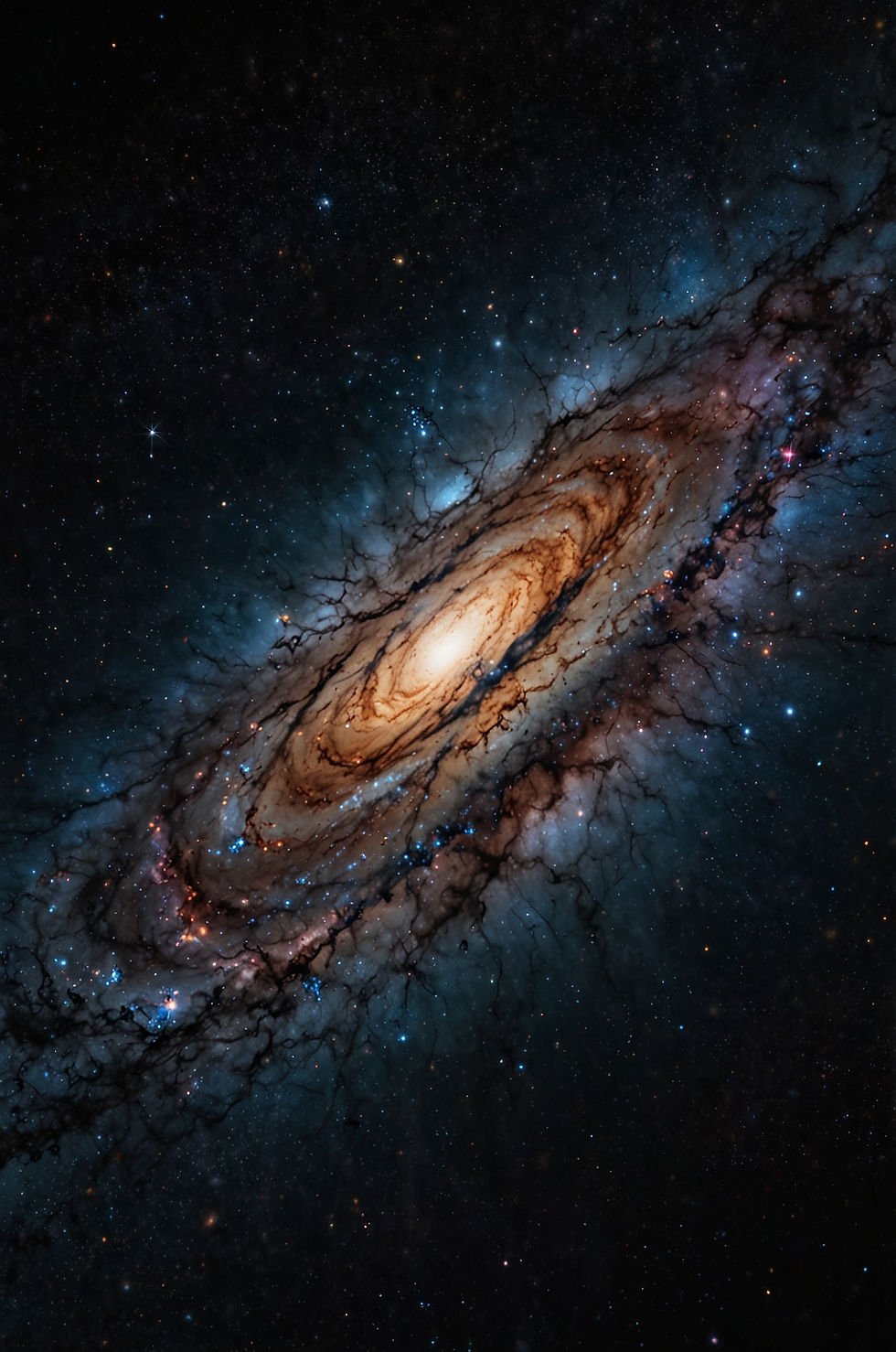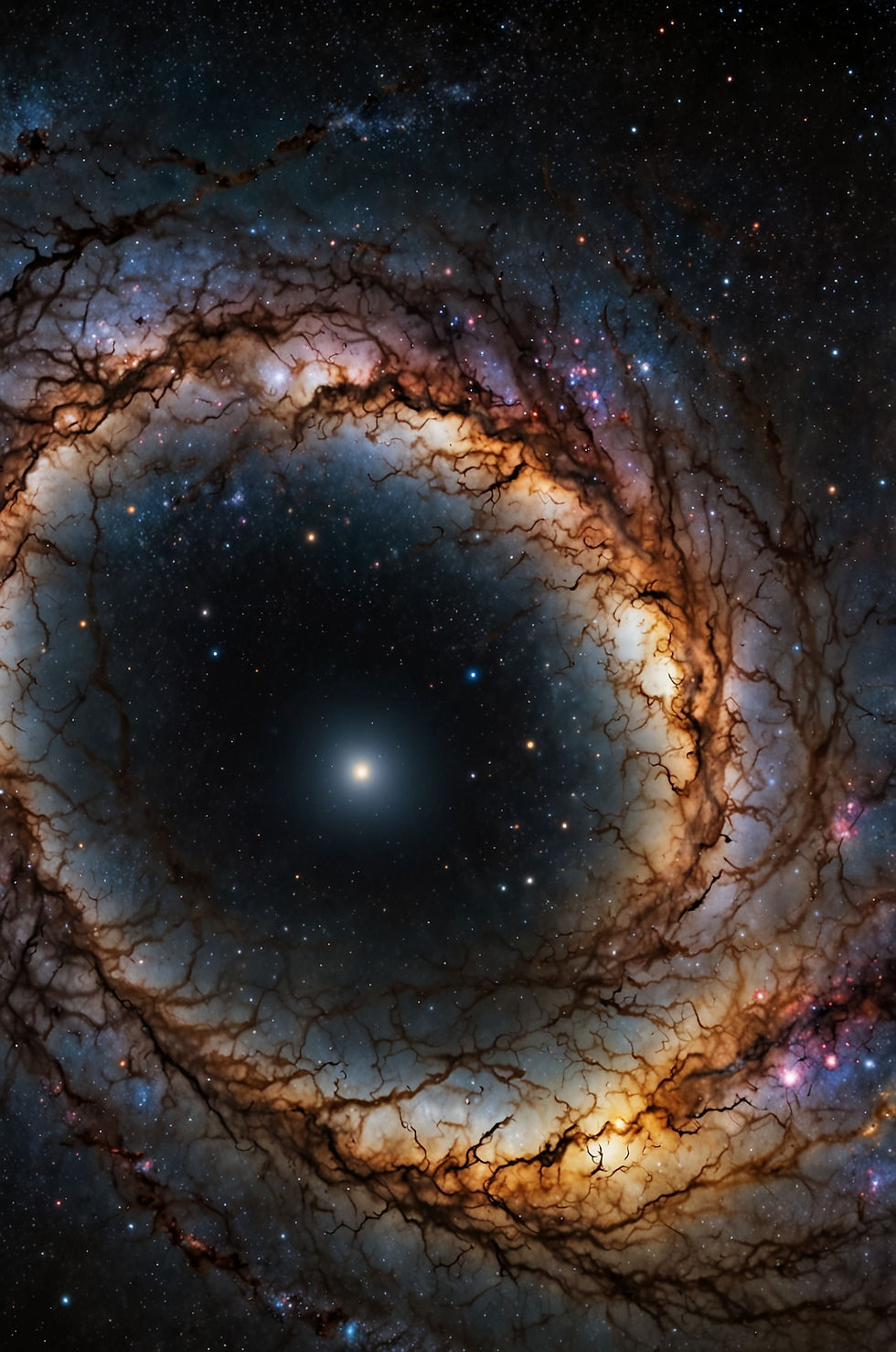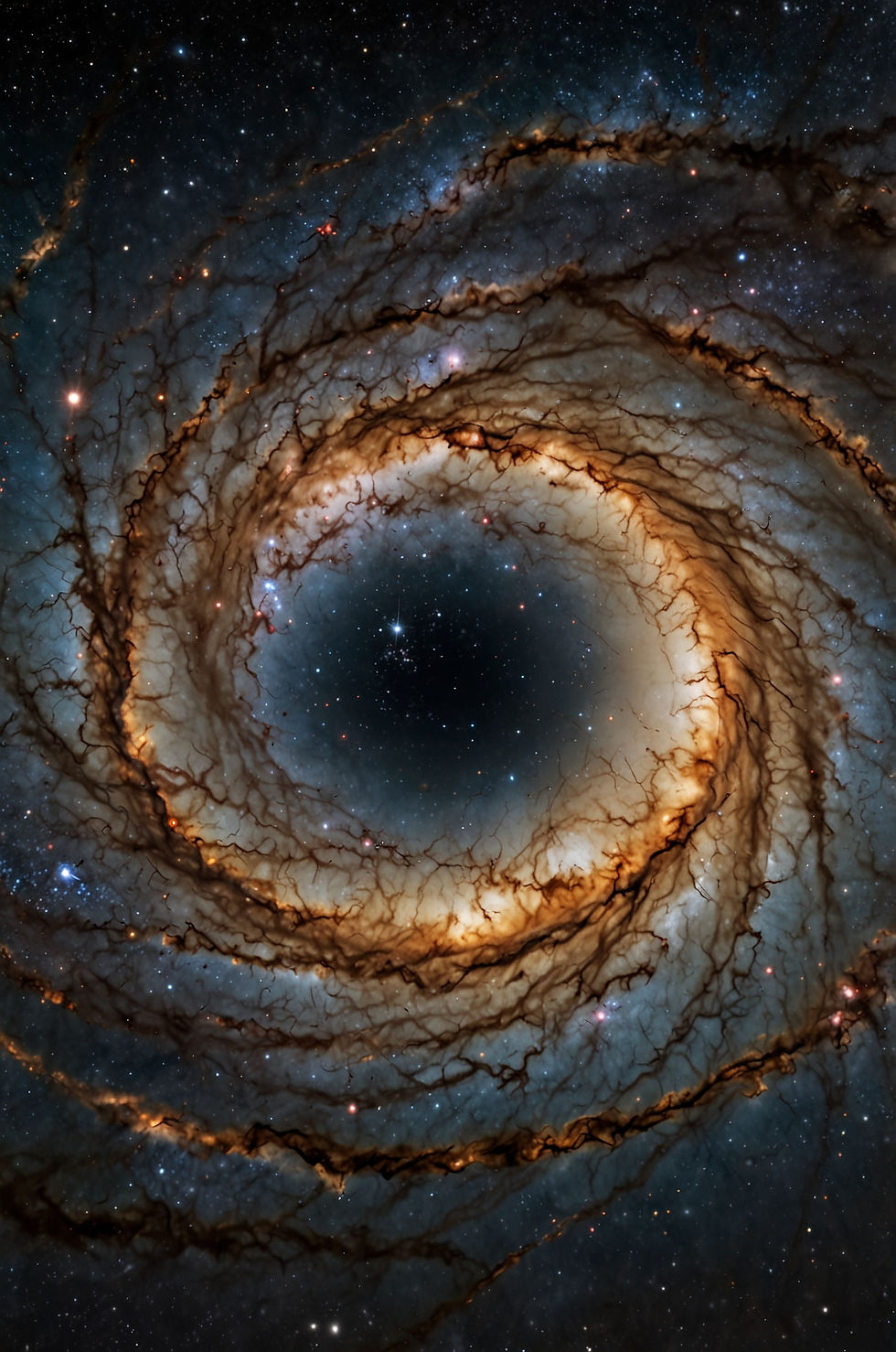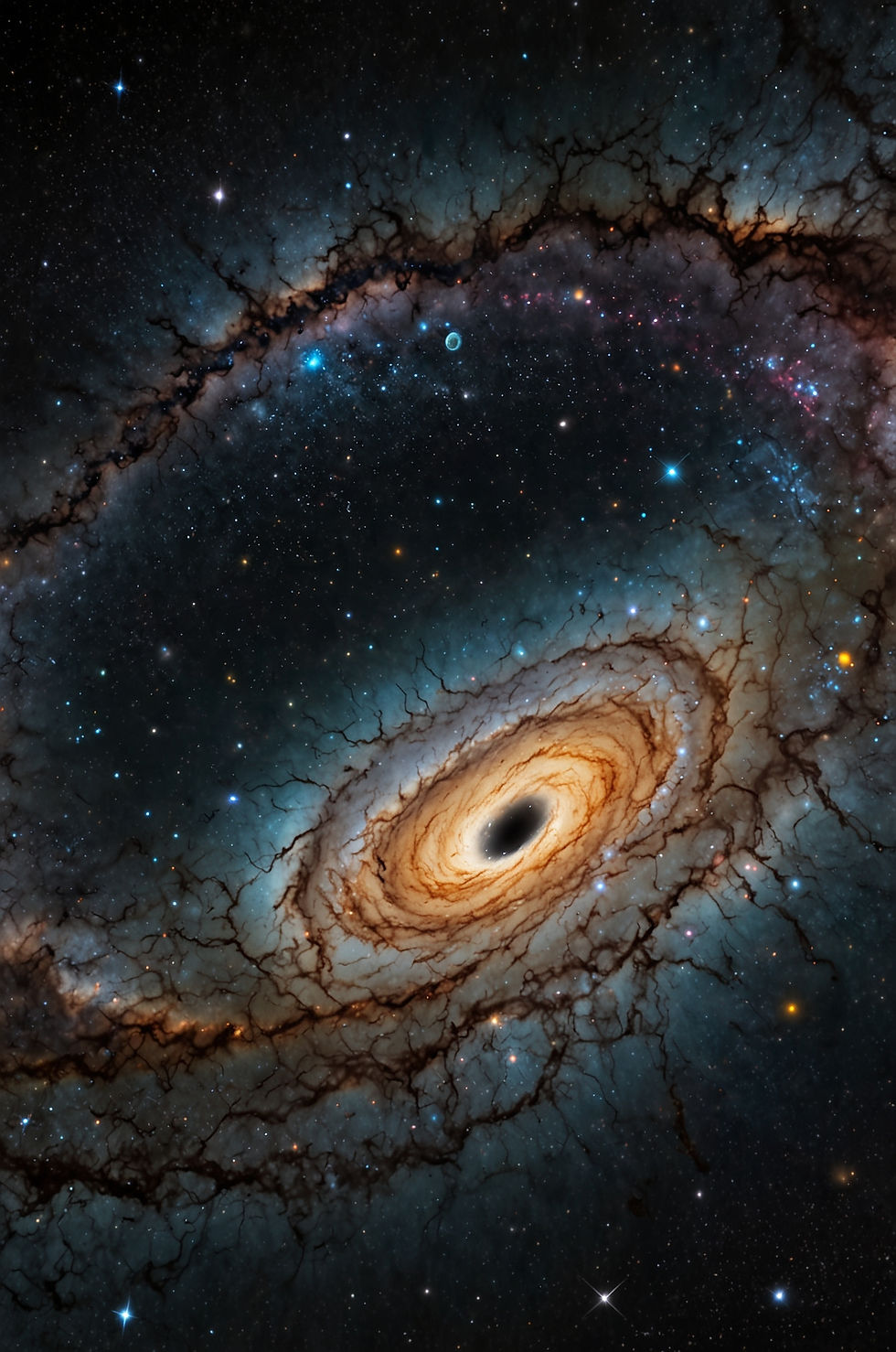Cosmic Spin into Black Hole
- AI it News

- Mar 25
- 5 min read
James Webb Telescope Data Suggests Universe May Have a Preferred Direction, Reigniting Black Hole Cosmology Debate

Washington D.C. - In a groundbreaking discovery that could rewrite our understanding of the cosmos, scientists analyzing data from the James Webb Space Telescope (JWST) have uncovered a surprising asymmetry in the rotation of spiral galaxies. The Advanced Deep Extragalactic Survey (JADES), a project utilizing JWST's unparalleled observational capabilities, examined 263 spiral galaxies and found that approximately two-thirds of them rotate clockwise, while only one-third rotate counterclockwise. This unexpected imbalance challenges the fundamental assumptions of a universe with no preferred direction and has reignited interest in the controversial "black hole cosmology" hypothesis.
The finding, detailed in a pre-print publication that is currently undergoing the peer-review process, has sent ripples through the astrophysics community. According to experts, the observed asymmetry, if confirmed by further studies, could signify that our current models of the universe's origin and structure are fundamentally incomplete. The widely accepted Big Bang theory, which serves as the cornerstone of modern cosmology, posits that the universe began from an extremely hot, dense state and has been expanding and cooling ever since. However, it doesn't predict a preferred rotational direction on such vast cosmic scales.
"This is a truly perplexing and potentially revolutionary observation," says Dr. Anya Sharma, a theoretical astrophysicist at the California Institute of Technology, who was not involved in the JADES research. "The standard cosmological model assumes isotropy – that the universe looks the same in all directions. This rotational asymmetry throws a wrench into that assumption and forces us to consider alternative explanations, some of which are quite radical."
Challenging the Cosmological Principle:

The foundation of modern cosmology rests on the Cosmological Principle, which states that the universe is homogeneous (uniform in its properties) and isotropic (the same in all directions) on a large scale. This principle simplifies cosmological models and allows scientists to apply the laws of physics uniformly across the observable universe. However, the JADES observation directly challenges the assumption of isotropy.
"If we lived in a truly isotropic universe, we would expect roughly equal numbers of galaxies rotating in either direction," explains Dr. Kenji Tanaka, lead author of the study and a researcher at the University of Tokyo. "The fact that we see a significant excess of clockwise-rotating galaxies suggests that there might be a large-scale directional bias in the universe's structure. This could be a subtle effect, but the sheer number of galaxies we analyzed strengthens the statistical significance of our findings."
The team used sophisticated image processing techniques to determine the rotational direction of the spiral galaxies. They analyzed the distribution of star formation regions within the galaxies' arms, identifying the leading and trailing edges of the spiral patterns. By comparing these features across the sample of 263 galaxies, they were able to determine the overall direction of rotation for each galaxy.
The Resurgence of Black Hole Cosmology:

The discovery has breathed new life into a fringe theory known as "black hole cosmology." This controversial hypothesis proposes that our entire observable universe exists within a rotating black hole located in a larger "parent" universe. The singularity at the center of a black hole, the point of infinite density where spacetime breaks down, is not necessarily the end of everything that falls in. Instead, some theoretical models suggest that it could be a portal to another region of spacetime, a new universe born from the collapse of the old.
"The idea sounds like something out of science fiction, but it's based on some serious theoretical physics," says Dr. David Almeida, a cosmologist at the Perimeter Institute for Theoretical Physics, who has published extensively on alternative cosmological models. "The mathematics allows for the possibility that a rotating black hole, known as a Kerr black hole, could act as a 'cosmological seed,' giving rise to a new universe inside its event horizon."
Proponents of black hole cosmology argue that the rotation of the parent black hole could impart a directional bias to the newly formed universe within. This bias could manifest as a preferred rotational direction for galaxies, precisely the kind of asymmetry observed by the JADES team.
"If our universe was born inside a rotating black hole, it's plausible that the rotation of the parent black hole would have left its imprint on the large-scale structure of our cosmos," explains Dr. Tanaka. "The excess of clockwise-rotating galaxies could be a relic of that primordial rotation."
Challenges and Counterarguments

While the black hole cosmology hypothesis offers a compelling explanation for the observed rotational asymmetry, it faces significant challenges and is met with skepticism by many mainstream cosmologists.
"The biggest problem is that we have no direct observational evidence that supports the idea that our universe is inside a black hole," says Dr. Emma Carter, a professor of astrophysics at Harvard University. "It's a highly speculative theory that relies on extrapolating our understanding of black holes far beyond their known limits."
Another challenge is explaining the origin of the parent black hole and the larger universe it resides in. If our universe is inside a black hole, what created that black hole, and what are the properties of the universe beyond it? These questions lead to an infinite regress, raising further questions about the ultimate origin of everything.
Furthermore, alternative explanations for the observed rotational asymmetry have been proposed. One possibility is that it is a statistical fluke, a random variation in the distribution of galaxy rotations that happens to be more pronounced in the area of the sky surveyed by JADES. Another possibility is that it is caused by some unknown physical process that occurred in the early universe, perhaps related to the formation of large-scale structures or the interaction of dark matter and dark energy.
"Before we jump to conclusions about black hole cosmology, we need to thoroughly investigate other potential explanations," cautions Dr. Sharma. "It's crucial to rule out statistical flukes and explore alternative physical mechanisms that could explain the observed asymmetry."
The Path Forward: Future Observations and Theoretical Modeling:
The JADES discovery has ignited a flurry of research activity aimed at confirming and explaining the rotational asymmetry. Astronomers are planning follow-up observations using JWST and other telescopes to expand the sample size of galaxies and to study their properties in more detail.
"We need to observe a larger number of galaxies in different regions of the sky to see if the asymmetry persists across the entire observable universe," says Dr. Tanaka. "We also need to investigate the properties of these galaxies, such as their age, mass, and composition, to see if there are any correlations with their rotational direction."
Theoretical physicists are also working to develop more sophisticated models of black hole cosmology to address the challenges and counterarguments raised by critics. These models need to explain how a universe can be born inside a black hole, how the laws of physics can be preserved across the event horizon, and how the observed properties of our universe, such as its expansion rate and the abundance of elements, can be reconciled with the black hole cosmology framework.
"We're still in the early stages of understanding the implications of this discovery," says Dr. Almeida. "But it's clear that it has the potential to revolutionize our understanding of the universe. Whether it leads to the acceptance of black hole cosmology or to the development of new, more comprehensive cosmological models, it will undoubtedly shape the future of astrophysics."
The James Webb Space Telescope continues to provide unprecedented insights into the workings of the universe, pushing the boundaries of our knowledge and challenging our most fundamental assumptions. The discovery of rotational asymmetry in spiral galaxies is just one example of the transformative power of JWST, and it promises to usher in a new era of cosmological exploration and discovery. As scientists continue to analyze the vast amounts of data pouring in from JWST, we can expect many more surprises and paradigm shifts in the years to come. The quest to understand the origin and evolution of the universe is far from over, and the journey is likely to be filled with unexpected twists and turns.




Comments